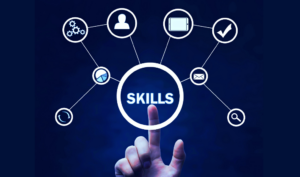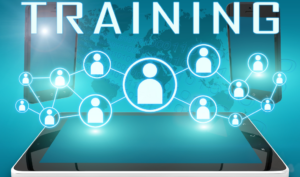
Talent in Harmony: Linking Work-Life Balance and Wellbeing
In a world where great talent is hard to find, emphasizing employee self-care and work-life balance gives employers a serious competitive advantage. Fostering a culture

In a world where great talent is hard to find, emphasizing employee self-care and work-life balance gives employers a serious competitive advantage. Fostering a culture

Artificial intelligence (AI) is transforming organizations at a breathtaking pace. But even positive change can trigger push-back from detractors. When left unchecked, AI resistance can

Workplace evolution is natural. In its time, the digital workplace of the late 20th century was revolutionary. But that era has come and gone. And

As organizations move beyond the pandemic, workforce development is changing in fundamental ways. For example, wellbeing has emerged as a top workforce priority, and this

Sponsored by Workleap Officevibe In most organizations, the human resources team is a primary point of contact throughout the employee journey. From the very first

If you’re a business or HR leader, you’re probably facing an enormous talent management challenge. Employers everywhere are struggling to retain and upskill existing employees,

As organizations enter a new era, we’re seeing a clear shift in management methods and practices. Traditional command-and-control styles are giving way to a more

As we take our first steps into 2024, it’s hard to imagine what this year will bring for HR and L&D. Last year was tumultuous,

Artificial intelligence. Some leaders love it. Some have accepted it. Others still have serious questions about it. But whatever your opinion may be, there is

Is concern over employee loyalty keeping you up at night? You’re not alone. Here’s one recent scenario: An executive team at a large healthcare system

Today’s workforce is rapidly changing, as Boomers pass the baton to their Gen X, Millennial, and Gen Z counterparts. However, for many organizations, this transition

In today’s fluid job market, companies everywhere are seeking innovative ways to tap into a more skilled, diverse, adaptable talent pipeline. This is a key

Corporate learning and development (L&D) is at a crossroads. Today’s workforce desperately needs a skills update to prepare for the future of work, and old-school

When the pandemic arrived in 2020, everyone’s definition of work changed in a heartbeat. Most people headed home, leaving their offices, cubicles, water coolers, and

Faced with increasingly turbulent economic times, businesses are rapidly learning the importance of strong leadership. The world has had enough problems dealing with the Covid-19

Data has percolated into every area of business — from the hiring process, to marketing programs, to charting a company’s strategy for the future. In

After years of upheaval that have redefined society, business and work, we’ve entered a period some call the “Great Reflection.” During this era of mindfulness,

Imagine you’re a hard-working entry-level employee who’s been in your current position for less than a year. Your skills are solid, but they don’t help

Sponsored by Learnsoft The Skills Gap is Growing. So is Pressure on L&D Demand for skilled employees seems limitless. Modern technology and automation are displacing

In HR circles, we talk a lot about employee development. Often, we focus on its role in improving workforce engagement and retention. But strategic learning

At some point, every organization will face an economic downturn. It could be a global recession or a serious slump in one of the industries

Investment in learning and talent development is an essential ingredient of every company’s engagement and retention plans. What is one crucial topic to include in

Remote workforce training has come of age. Forced to get creative during lockdowns, many companies moved beyond their traditional learning and development initiatives, exploring other

You’ve spent the day at a leadership conference learning all sorts of great things: how to coach your team, how to build engagement, how to

For many employees, a job isn’t simply the act of doing some work and collecting a paycheck anymore. For example, Millennial employees live in what